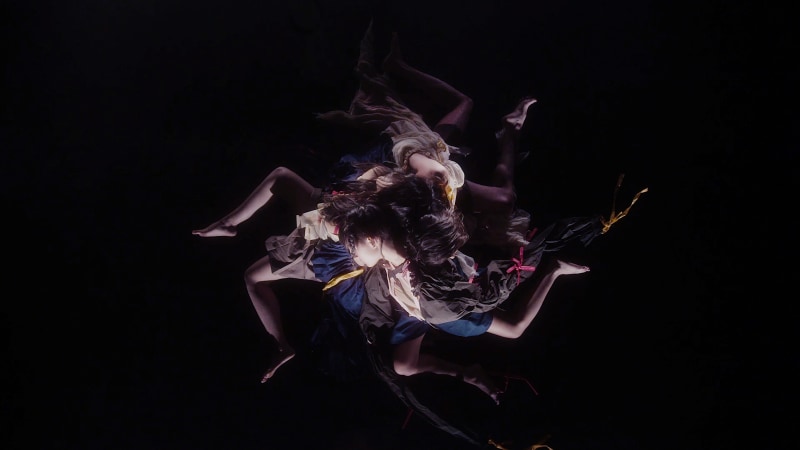
Catalina Ouyang: forgive everything
2276 East 16th Street, Los Angeles, CA 90021
Saturday, November 12 at 5:00 PM – 8:00 PM
Ends Jan 21, 2023
Ends Jan 21, 2023
Night Gallery is thrilled to announce forgive everything, an exhibition of new work by Catalina Ouyang, presented in collaboration with Make Room. In their first solo show at the gallery, the artist presents a video installation titled Syzygy and a new video work, Sympathy for the Devil, alongside a suite of sculptures.
The conceptual center of forgive everything is the three-body problem, which, in physics and mathematics, describes a chaotic system between particles. The chaos of the three-body problem lies in its indeterminacy; the motion of particles cannot be predicted. Here, Ouyang looks to the three-body problem and its components as a framework for the interrelation between self, mother, and grandmother. The unsolvable nature of the three-body problem echoes lapses in a family’s knowledge of one another as the artist takes up their own unsolvable project: to recover intergenerational histories through repetition, exhaustion, and gesture.
forgive everything can be approached as a sequel to THREE BETRAYALS, a film made by the artist in 2021 and presented at No Place Gallery in 2022. In the preceding work, Ouyang considers “betrayal” not only as a violation of trust, but as a generative act that passes forth and thus preserves information. As an ensuant, “forgive everything” extends a kind of total generosity—or perdonare, the Latin intransitive to “give completely”—while signaling at once an accusation: “Why have you not done so?” To “forgive everything” is to acknowledge historical limitation and suffering, then introduce the possibility for expansion and sensual rupture.
Ouyang’s new single channel film Sympathy for the Devil plays on a monitor in Night Gallery East. Named for the Rolling Stones song around which Godard’s 1968 film One Plus One is based, Sympathy for the Devil follows an extended conversation between Ouyang and their mother. The work opens with Ouyang asking their mother, Lilly, about when she met the Rolling Stones while waitressing in Chicago, but their exchange evolves into an inquiry about the conditions of Lilly’s upbringing in and emigration from China. In the same year that Godard—a white, male Marxist—makes his film about the Rolling Stones in Europe, Ouyang’s mother in Maoist China lives the material realities of communism. Lilly’s answers are shrouded in a reluctance to divulge; what occurs between mother and child is a rewriting of personal history in real time. Many things cannot be reconciled: a parent’s secrecy, uneven political ideology, the provocative distortions of Western idealism.
Ouyang has divided the gallery space in three and placed one free standing sculpture in each section. The works embrace a slew of unexpected materials, including carved wood, a found school chair, fleece, steel, resin, and burnt fabric. This synthesis suggests a refusal of the notion of a pure origin and a conjunction of discard and mending, wound and repair. The artist’s intervention creates a sense of inevitability: not unlike a family, there is no other way that these objects could have found themselves such a system of relation.
In Syzygy, three projectors are mounted on spinning motors, divided by two wall-to-wall scrims. Each projector presents looping footage of choreography that addresses the three-body problem as a movement score. As the motors rotate, the image frame enters a state of constant destabilization. Footage is distorted as projections come into contact with the gallery’s architecture and interrupted by viewers moving between each scrim. Directional speakers emit sound elements comprising fugal compositions, cello improvisations, and found voice recordings only audible at the points where scrim meets wall, invoking questions of interference, legibility, and opacity.
Through Syzygy’s choreography, Ouyang does not aim to illustrate or interpret the chaos of the three-body problem, but instead proposes the human form as a channel for affect, uniquely capable of capturing what it may feel like to repeatedly attempt the impossible. Performers’ movements are visceral, reactionary, and demanding. Floorwork and crawling starts and stops, returning to past permutations. Baroque garments establish a formal atmosphere of revelation and secrecy, mapping space through endless folds. The excesses of the pleats contain multitudes, recalling Deleuze: “The soul is what has folds and is full of folds.”
Sympathy for the Devil
Camera: Alicia Afshar, Lance Williams
Music: Dorothy Carlos, Nikhil Rao
Syzygy
Performers: Alice Chacon, Quinn Chen, Eloise Deluca, Crystal J. Sasaki
Choreography: Eloise Deluca, Lu Yim
Camera: Marit Liang
Sound: Dorothy Carlos, Catalina Ouyang, Nikhil Rao
Garments: Brandon Wen
Catalina Ouyang has presented solo exhibitions at Lyles & King, New York; No Place Gallery, Columbus; Make Room, Los Angeles; Real Art Ways, Hartford; and Knockdown Center, Queens. They have been featured in recent group shows at the Aldrich Contemporary Art Museum, Ridgefield; Kimball Art Center, Park City; Jeffrey Deitch, New York and Los Angeles; Galerie Kandlhofer, Vienna; Simon Lee Gallery, London and Hong Kong; and Friends Indeed, San Francisco, among others. Ouyang is the recipient of numerous awards and grants, and was a 2020-21 Smack Mellon Artist in Residence. Their work has been written about in publications including Artforum, Frieze Magazine, The Cut, Flaunt Magazine, the New York Times, and Art & Object. Ouyang received an MFA from Yale University and is based in Brooklyn, New York. Ouyang is represented by Make Room in Los Angeles and Lyles and King in New York.
- ✨Curate LA Partner
